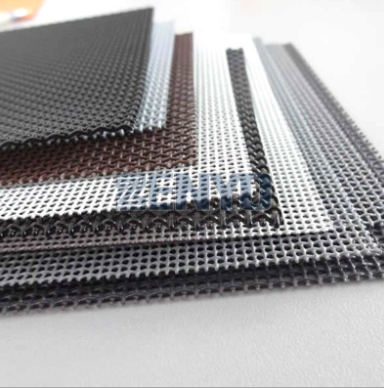What is the difference between security screen and security film?
In the pursuit of fortifying our homes against potential threats, security measures have evolved, offering a range of options to enhance safety. Two prominent choices are security screens and security films, each presenting unique features designed to protect homes and occupants.
1. Security Screens:
a. Material Composition:
Metal Framework: Security screens are typically constructed with robust metal frameworks, often using materials like aluminum or steel. This sturdy composition forms a physical barrier against intruders.
b. Mesh Design:
High-Strength Mesh: The key feature of security screens is the incorporation of high-strength mesh, usually made from materials like stainless steel. This mesh acts as a barrier against forced entry attempts, providing a durable and transparent layer of protection.
c. Installation:
Fixed or Hinged Installation: Security screens are commonly installed as fixed or hinged panels on doors and windows. Some designs allow for easy integration with existing doors and windows.
d. Benefits:
Physical Deterrent: The robust construction of security screens serves as a physical deterrent, preventing unauthorized access and providing peace of mind for homeowners.
Ventilation: While offering security, many security screen designs maintain proper ventilation, allowing fresh air to circulate without compromising safety.
e. Considerations:
Visible Deterrence: The visible presence of security screens can act as a deterrent, signaling to potential intruders that the property is fortified.
2. Security Films:
a. Material Composition:
Polyester or Polymer Films: Security films are thin, transparent layers typically made from polyester or polymer materials. Despite their thin profile, they are engineered to offer strength and resilience.
b. Application Process:
Adhesive Application: Security films are applied directly to existing glass surfaces using a strong adhesive. The film adheres to the glass, creating a protective layer.
c. Benefits:
Invisible Protection: One of the primary advantages of security films is their transparent nature. They provide protection without altering the appearance of doors or windows.
UV Protection: Many security films also offer UV protection, reducing the penetration of harmful ultraviolet rays and helping to preserve furnishings.
d. Considerations:
Dependency on Glass Strength: The effectiveness of security films is closely tied to the strength of the underlying glass. While they provide an additional layer, they may not prevent the glass from breaking.
3. Key Differences:
a. Physical vs. Invisible Protection:
Security Screens: Offer visible and physical protection with a metal framework and high-strength mesh.
Security Films: Provide invisible protection by applying a thin, transparent layer to existing glass surfaces.
b. Installation and Integration:
Security Screens: Installed as fixed or hinged panels, integrating with doors and windows.
Security Films: Applied directly to existing glass surfaces without altering the structure.
c. Visible Deterrence:
Security Screens: Act as a visible deterrent due to their presence.
Security Films: Offer protection without altering the appearance of doors or windows.
d. Dependency on Glass Strength:
Security Screens: Independent of underlying glass strength.
Security Films: Effectiveness is closely tied to the strength of the existing glass.
4. Common Applications:
a. Security Screens:
Residential Doors and Windows: Mainly used for securing residential doors and windows.
Patio and Porch Enclosures: Provide security for outdoor living spaces.
b. Security Films:
Commercial Windows: Often applied to storefronts and commercial windows.
Residential Glass Doors: Applied to glass doors for an added layer of protection.
5. Choosing the Right Option:
a. Consider Home Design:
Security Screens: Suitable for homes where a visible security presence is acceptable.
Security Films: Ideal for maintaining an uninterrupted aesthetic.
b. Assess Security Needs:
Security Screens: Best for those seeking a visible deterrent with robust physical protection.
Security Films: Suitable for those prioritizing invisible protection while preserving the existing aesthetic.
6. Conclusion:
In the realm of home security, the choice between security screens and security films ultimately depends on individual preferences, security priorities, and the desired aesthetic. Whether opting for the visible deterrent of security screens or the invisible protection of security films, both solutions contribute to bolstering the safety and security of homes, providing homeowners with peace of mind in an ever-evolving landscape of security options.


